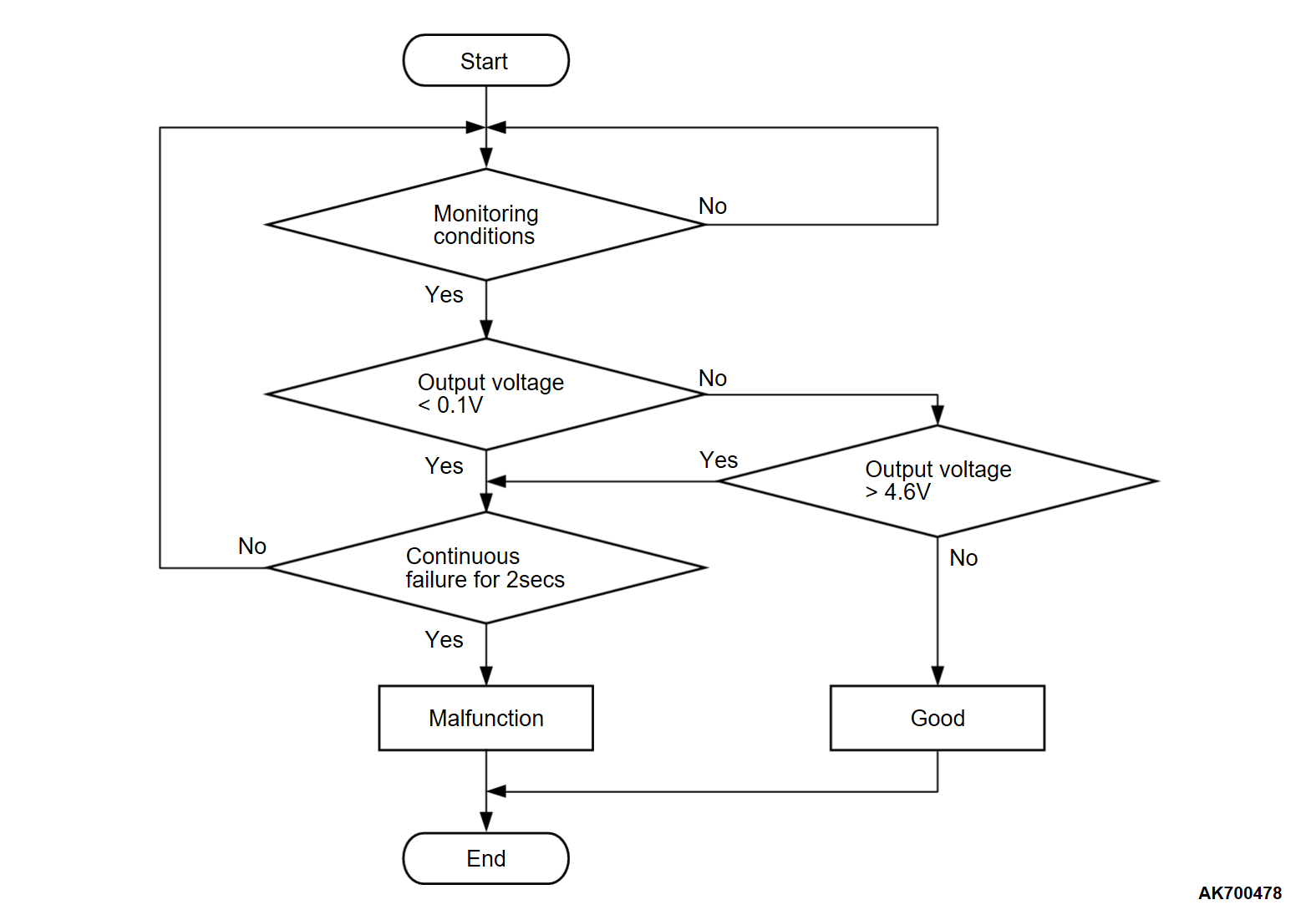DTC P0182: Fuel Tank Temperature Sensor Circuit Low Input
CIRCUIT OPERATION
- 5-volt voltage is applied to the fuel tank temperature sensor output terminal from the ECM terminal F/TM via the resistor in the ECM.
- The fuel tank temperature sensor output voltage increases when the resistance increases and decreases when the resistance decreases. The sensor ground terminal is grounded to the vehicle body.
TECHNICAL DESCRIPTION
- The fuel tank temperature sensor converts the fuel tank temperature to a voltage.
- The ECM detects the fuel tank temperature with this output voltage.
DESCRIPTIONS OF MONITOR METHODS
- Fuel tank temperature sensor output voltage is out of specified range.
MONITOR EXECUTION
- Continuous
MONITOR EXECUTION CONDITIONS (Other monitor and Sensor)
Other Monitor (There is no temporary DTC stored in memory for the item monitored below)
- Not applicable
Sensor (The sensor below is determined to be normal)
- Not applicable
Check Condition
- More than 2 seconds have passed since the engine starting sequence was completed.
Judgment Criterion
- Fuel tank temperature sensor output voltage is less than 0.1 volt for 2 seconds.
FAIL-SAFE AND BACKUP FUNCTION
- None
TROUBLESHOOTING HINTS (The most likely causes for this code to be stored are:)
- Fuel tank temperature sensor failed.
- Shorted fuel tank temperature sensor circuit or connector damage.
- ECM failed.
DIAGNOSIS
Required Special Tools:
- MB992744: Vehicle communication interface-Lite (V.C.I.-Lite)
- MB992745: V.C.I.-Lite main harness A
- MB992747: V.C.I.-Lite USB cable short
- MB992748: V.C.I.-Lite USB cable long
- MB991958: Scan Tool (M.U.T.-III Sub Assembly)
- MB991824: Vehicles Communication Interface (V.C.I.)
- MB991827: M.U.T.-III USB Cable
- MB991910: M.U.T.-III Main Harness A (Vehicles with CAN communication system)
STEP 1. Using scan tool (M.U.T.-III), check data list item 53: Fuel Tank Temperature Sensor.
| caution | To prevent damage to scan tool (M.U.T.-III), always turn the ignition switch to the "LOCK" (OFF) position before connecting or disconnecting scan tool (M.U.T.-III). |
(2) Turn the ignition switch to the "ON" position.
(3) Set scan tool (M.U.T.-III) to the data reading mode for item 53, Fuel Tank Temperature Sensor.
- Approximately the same as the ambient air temperature when the engine is cooled.
(4) Turn the ignition switch to the "LOCK" (OFF) position.
Is the sensor operating properly?
STEP 2. Check the fuel tank temperature sensor.
(1) Disconnect the fuel pump module connector.
(2) Measure the resistance between terminal F/TM line and terminal ground line of the fuel pump module.
Standard value: 0.43 - 12.3 kΩ [at -10 to 70 °C (14 to 158 °F)]
Is the measured resistance between 0.43 and 12.3 kΩ?
STEP 3. Check of short circuit to ground in F/TM line between fuel pump module connector and ECM connector.
Is the harness wire in good condition?
STEP 4. Using scan tool (M.U.T.-III), check data list item 53: Fuel Tank Temperature Sensor.
(1) Turn the ignition switch to the "ON" position.
(2) Set scan tool (M.U.T.-III) to the data reading mode for item 53, Fuel Tank Temperature Sensor.
- Approximately the same as the ambient air temperature when the engine is cooled.
(3) Turn the ignition switch to the "LOCK" (OFF) position.
Is the sensor operating properly?
![[Previous]](../../../buttons/fprev.png)
![[Next]](../../../buttons/fnext.png)



